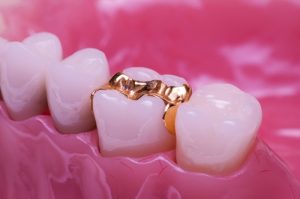What are Inlays and Onlays?
What are inlays and onlays?
Inlays and onlays are used to cover the decays of damaged teeth. The difference between the two is that inlays are like fillings that are set within the cusps of the chewing teeth while onlays are slightly bigger than the inlays and they cover a wider surface area. They (0nlays) may cover one or more cusps of the decay. Both of these inlays and onlays are prepared from outside the mouth and then they are transported to the affected teeth which have decayed. This is also considered as part of restorative dentistry as they help an individual to restore their smile and boost their confidence. They are able to hide any decayed teeth, broken teeth and chipped teeth. In today’s world, it is important to note that people have a variety of choices to choose from in order to correct any dental anomalies and restore their smile. There is no need of not being able to fit into the society for issues such as dental problems. Inlays and onlays are also part of the solution to be considered. If you need a dentist to perform this service for you, we recommend you visit www.advancedlisledental.com
that people have a variety of choices to choose from in order to correct any dental anomalies and restore their smile. There is no need of not being able to fit into the society for issues such as dental problems. Inlays and onlays are also part of the solution to be considered. If you need a dentist to perform this service for you, we recommend you visit www.advancedlisledental.com
Factors to consider when choosing inlays and onlays
One needs to ensure that the inlays or onlays are durable and will take the person for a longer time. This can be facilitated by:
- The materials used to make the onlays and inlays- For durability go for the ones made of long lasting materials
- The type of food that one eats- When the inlays and onlays are still new one should strive at eating soft foods and a lot of drinks. This is to allow them to completely dry up and fit into the teeth.
- Good oral hygiene- The person should also put in mind that they will need to maintain a high standards of hygiene so as to protect the onlays and inlays from having reactions with food. This is more common with all foods but special attention should be paid when one consumes, acidic foods.
- The type of teeth affected- The durability of onlays and inlays is also determined by the type of teeth affected. They tend to last longer on the biting teeth than on the chewing teeth.
Advantages of having onlays and inlays
- Having them ensures that one’s teeth is protected from damage by bacteria. They cover the decaying teeth and stop any further decaying process.
- Most of them are made of porcelain and therefore they offer a stronger structural support to the affected teeth.
- They can be colored into the natural color of one’s natural teeth. This is an advantage since initially when they were made of metal, they came with the color of the metal.
- They do not expand or contract as a result of hot or cold foods.